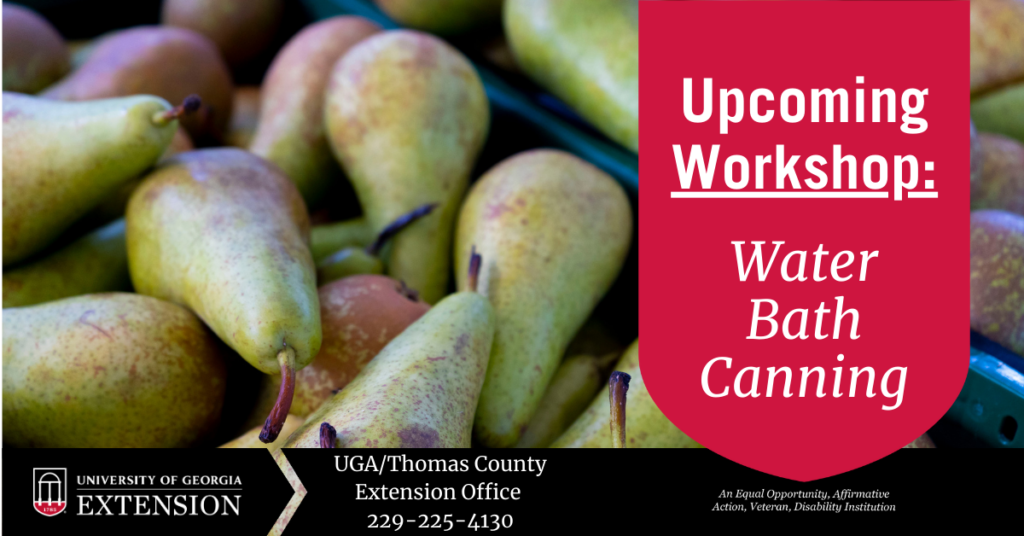
Basics of Home Canning Series
Join Olivia Tumlin on Aug. 10th to learn about preserving pears at home! This class will include a lesson on water bath canning and an interactive demonstration of the process. This class will be held Saturday Aug. 10th, from 1pm-4pm at the Thomas County Extension Office. The cost is $15, call (229) 225-4130 or email Olivia.Tumlin@uga.edu to register!
What is Home Canning?
At home canning is a great way to preserve your garden and all the produce that summer has to offer! However, you need to follow some rules if you want to can safely.
The Recipe
Make sure you are using an approved and tested recipe. Many recipes passed down through the years or those found in older cookbooks do not include instructions for processing times for home canned foods. The best way to stay safe and not waste food is to look for recipes from University Extension services across the US, or from the National Center for Home Food Preservation Website, or from So Easy to Preserve.
The Food
Next, pay attention to the type of food you are preserving. When choosing produce to preserve, remember that canning will not increase the quality of the product. So choose high quality, unblemished produce that isn’t too ripe. High acid foods, like tomatoes, fruits, pickles, and relishes require a boiling water canner. A boiling water canner is a large metal pot with a rack in the bottom that has enough space for the cans to be covered by 1-2 inches of vigorously boiling water. Low-Acid foods, like vegetables and meat, require a pressure canner. A pressure canner processes the food at a much higher temperature (~240 degrees F.) that is necessary to kill dangerous pathogens.
If you have questions about canning foods at home, give me (Olivia) a visit or call at the Thomas County Extension Office!
